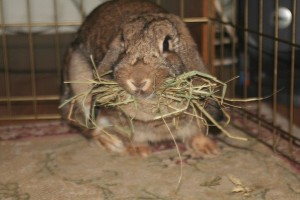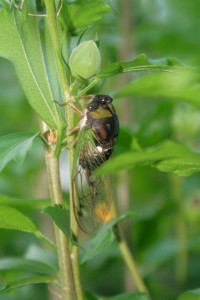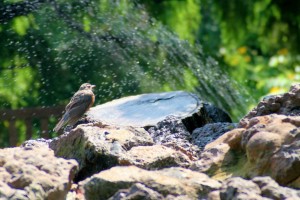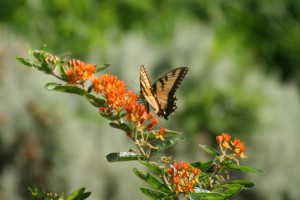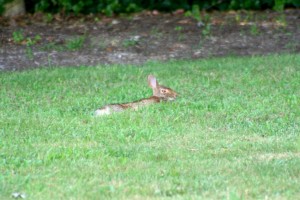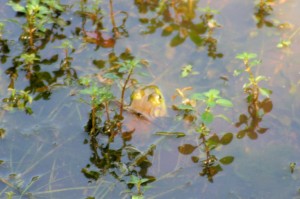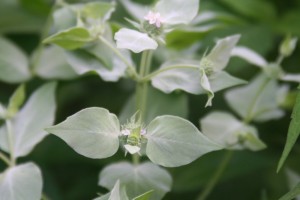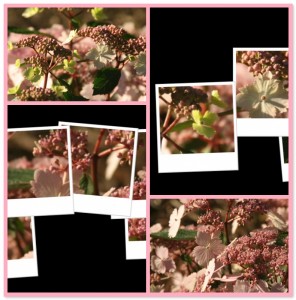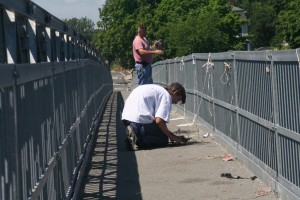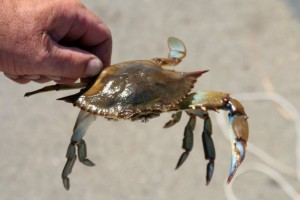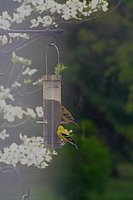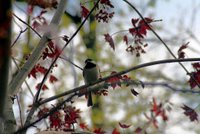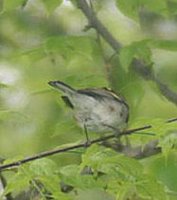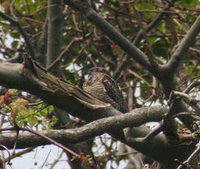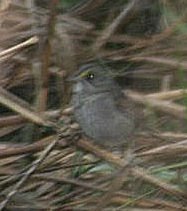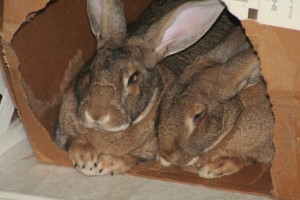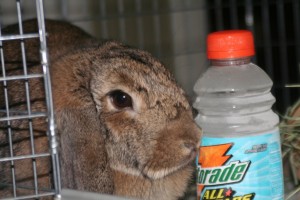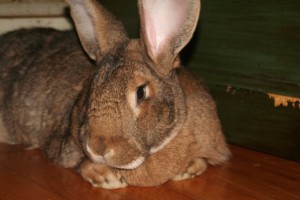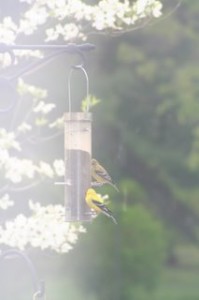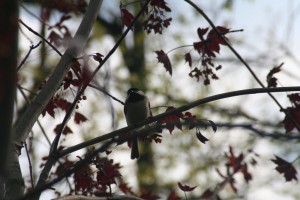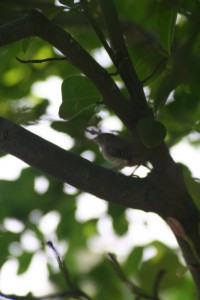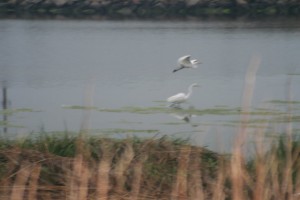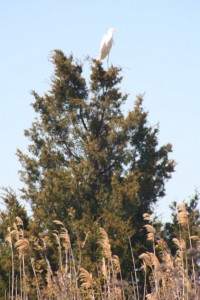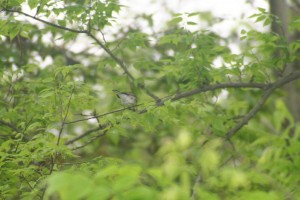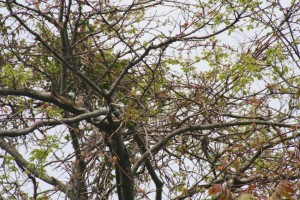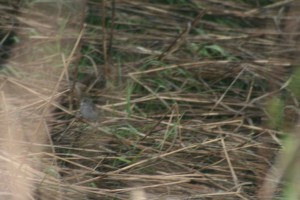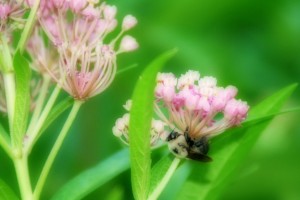Peeper (yes, the stray bunny has a name now) has gathered hay for a nest, like you see in the pic above, twice in the two weeks she’s been here. On her third or fourth day she pulled out a lot of fur from her belly, which is what bunnies do when birthing is imminent. This pic was taken last Wednesday. The timing is important to me because I’m hoping that the sporadic nature of her nest-building behaviors means that she is just very hormonal and may only be experiencing a false pregnancy. False would be good.
On the advice of an experienced bunny person (thanks Sharon!) I’ve prepared a place for her nest, just in case. A smallish litterbox lined with a soft fleece, tucked away in the downstairs part of her cage should give her the privacy and safety that she will (hopefully not) need. I’ve also draped that part of the cage with an old folded curtain so that it is dark and draft free.
When I first made these changes a week ago, like any bunny, she was very curious and pushed and pulled at the fabric and rearranged everything to her liking. Since then she has completely ignored it. Hasn’t been in the box or even peed on that soft bit of fabric like most bunnies would have to do.
She is enjoying her twice daily salads and plenty of hay. She is a master of the *dead-lop-flop* and has started to act a little silly; almost dancing sometimes when she is out for play. She is comfortable here and is working her bunny magic on me day by day.
